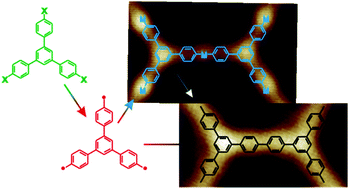Surface-assisted Ullmann coupling
Abstract
Surface-assisted Ullmann coupling is the workhorse of on-surfaces synthesis. Among the various couplings that were successfully transferred from solution to solid surfaces, Ullmann coupling is arguably the most reliable, controllable, and widespread coupling reaction. The basic reaction scheme is straightforward: halogenated precursors are deposited onto solid surfaces, normally of coinage metals. In the adsorbed state the halogen substitutents are split off by virtue of the surface's reactivity, thereby generating acitvated species that subsequently recombine by forming C–C bonds. Ullmann coupling is well suited for reticular synthesis of novel organic nanostructures: ideally, the halogen substitution pattern of the precursor – which becomes the monomer upon dehalogenation – predetermines dimensionality and topology of the covalent nanostructures. Also in many relevant systems, side-reactions do not occur. However, in reality topological defects, competing C–H activation on more reactive surfaces, and reaction intermediates render this seemingly simple coupling reaction not only more complex, but also more interesting for fundamental research. This feature article aims to provide an account of the vast amount of already published work and tries to destill important findings and currents trends in surface-assisted Ullmann coupling.



 Please wait while we load your content...
Please wait while we load your content...